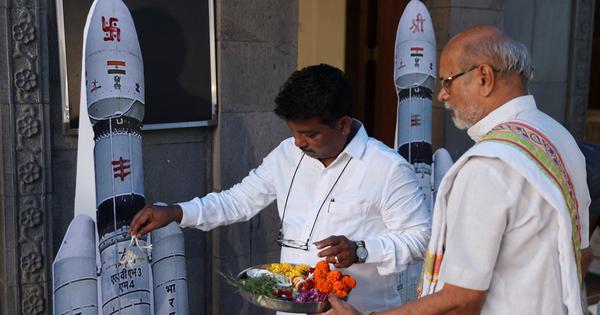
Acharya Prafulla Chandra Ray (1861-1944) is also called the “Father of Modern Indian Chemistry” in India. In one of his popular science articles written in Bengali, “Satyer Sandhaan” (Search for Truth), he says:
I have been teaching for half a century; in this period I have told thousands of students that solar and lunar eclipses are not caused by the demons Rahu and Ketu devouring the sun and the moon; and that eclipses do not end due to the prayers of the humans and the demons releasing the sun and the moon; that these beliefs are false and products of imagination. For half a century I have told this to the students. They listened and agreed. But during the eclipses, the moment conch shells are blown in the houses, the moment prayer processions come out in the streets, these educated people also join the processions and throw away their food.
In India, we often witness even today what PC Ray had recorded about a hundred years ago. Leave the common citizens alone; even scientists and researchers observe rituals based on laughable superstitions. Some scientists do not eat during eclipses, break coconuts, recite prayers or put a swastika mark on imported instruments and machines. The Indian Space Research Organisation (ISRO) even today sends models of rockets and satellites to Tirupati before launching them.
If we analyse PC Ray’s concern, two aspects of our social structure become evident. Firstly, leaving aside common citizens, even scientists and researchers experience extreme social pressures to observe evidently unscientific and irrational rituals, even if they do not believe in them or have studied scientific explanations related to a specific natural phenomenon. Under this social pressure, scientific explanations are constrained from translating into the required attitudinal change. Secondly, it is also clear that over the past hundred years, this social pressure has not changed substantially.
Probably the reason lies in the creative abilities of the myth and superstition churning machinery. It has adapted to a technology-driven, fast-changing world and shown an amazing capacity to transform and reinvent old myths and superstitions. At the same time, this machinery has invented new ones to cater to changing lifestyles. For example, the suggestion to harness energy by capturing Jinns (Jinni), who, according to Islamic belief, are made of fire created by “Allah”, and ॐ = mc² are nothing but old myths wrapped in new garbs.
What keeps the market of myths and superstitions alive and thriving, constantly challenging the hegemony of science? If we observe the daily routine of a child, they are continually bombarded with religious messages. When they wake up in the morning, invariably, someone at home is engaged in performing religious rituals. On their way to school, at every few hundred metres, they encounter religious places such as temples, mosques, gurudwaras, churches and so on. The school day begins with a prayer assembly. If they visit the market, religious symbols are visible even in shops. In India, even in secular spaces such as banks, hospitals and scientific laboratories, objects serve as reminders of some myth or superstition. There are dedicated religious TV channels, and even news channels allocate substantial coverage to religious messages. The internet, WhatsApp and caller tunes are also filled with religious content. Scientific conferences and workshops often open with religious activities like Saraswati Vandana, Ganesh Vandana or the recitation of the Quran.
These strong religious audio-visual messages constantly bombard the thought structure of a common citizen. During religious festival seasons, their frequency increases manyfold. From waking to bedtime, throughout their life, this hailstorm of messages relentlessly touches the conscious and subconscious mind. Trapped within this socio–cultural structure, the relationship between science and the common citizen remains tenuous and fragile. The contact time with science during daily life is minimal.
In other words, science, despite being highly respected in society, is confined to a small corner of our consciousness. In religious places, churches, mosques and temples we never see pictures or quotations of any scientists like Galileo, Newton, Einstein, Baudhayana, Aryabhata, Brahmagupta, Bhaskaracharya, Acharya PC Ray, Jagdish Chandra Bose, CV Raman, Meghnad Saha, Homi Jahangir Bhabha, Shanti Swaroop Bhatnagar, Vikram Sarabhai, but there are plenty of religious pictures and statues even in secular spaces.
It is not that the common man does not come across science in our society. Farmers receive scientific knowledge, knowingly or unknowingly, while purchasing seeds, fertilisers and pesticides. People acquire scientific information when they visit hospitals or consult doctors, and children are exposed to it in schools, colleges and science museums. Electronic and print media also gear up to spread scientific information when there is a disaster like a tsunami, earthquake, epidemic, storm, pandemic, etc. At times, when there is a major scientific or technological breakthrough, they also start disseminating scientific or technological information. Studies worldwide suggest that science in broadcast and print media competes for space with politics, economics, entertainment and sports, often losing the battle.
However, in the case of natural disasters, wars, pandemics and similar events, information channels also address the scientific aspects of these occurrences. During such events, curiosity and receptivity to usable scientific information among people increase exponentially. The internet has changed this to some extent. It has become a valuable source of the latest information across all scientific disciplines, but this medium requires citizens to seek information voluntarily. A major problem with internet searches is that there is an overwhelming amount of fake and pseudo-scientific information available, making it easy for even trained individuals to get completely lost.
However, the common citizen hears about science through audio-visual messaging only when there is an urgent individual or social need. It is difficult for the average citizen to become familiar with science, since scientific communication occurs so infrequently and at such long intervals. Pandit Jawaharlal Nehru famously said, “The twentieth century belongs to those who will befriend science,” yet this remains a challenging task because society offers few opportunities for people to do so. Science is more difficult to relate to than technology.
Excerpted with permission from From Myths To Science: The Evolving Story of the Universe, Gauhar Raza, Penguin India.
📰 Crime Today News is proudly sponsored by DRYFRUIT & CO – A Brand by eFabby Global LLC
Design & Developed by Yes Mom Hosting






